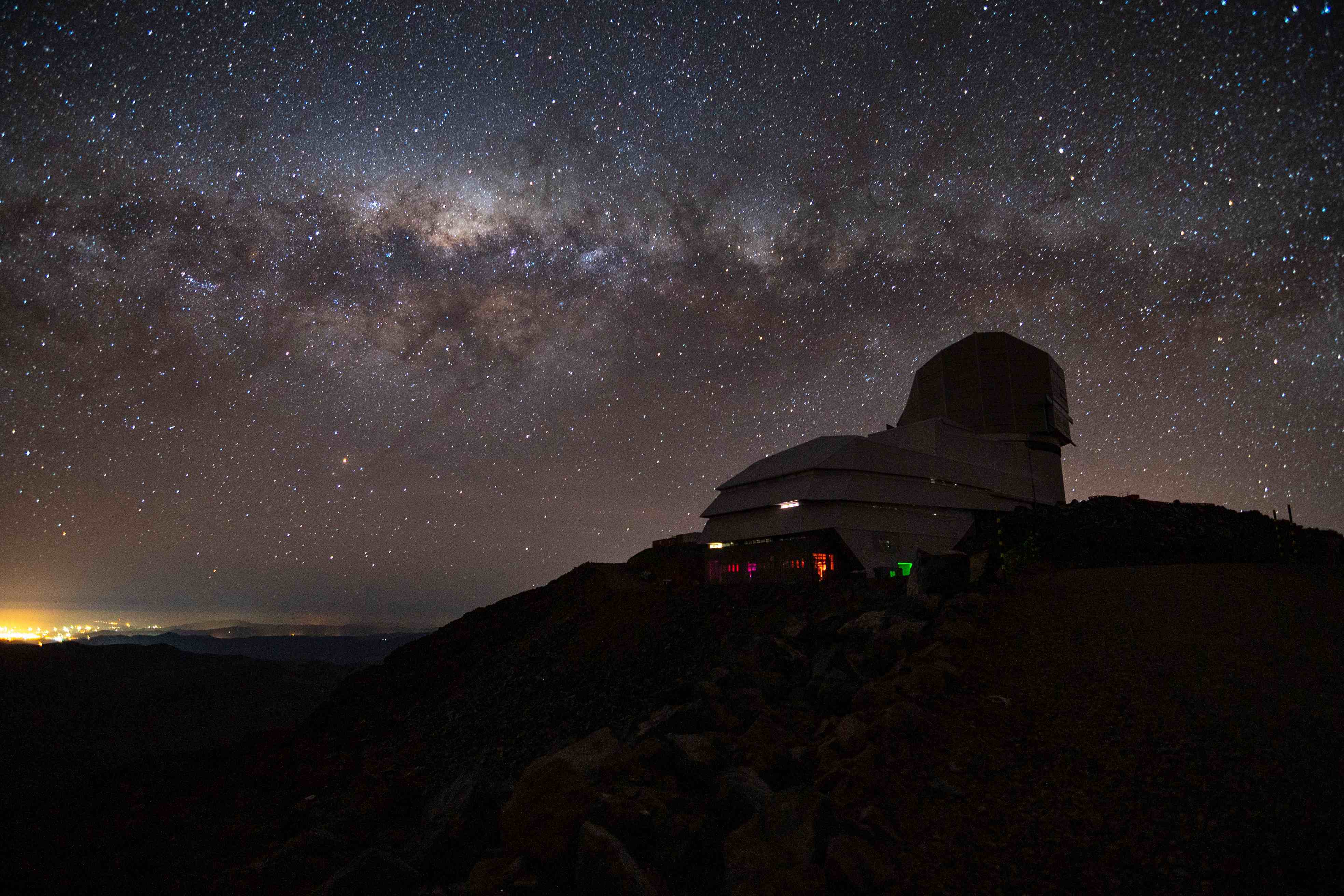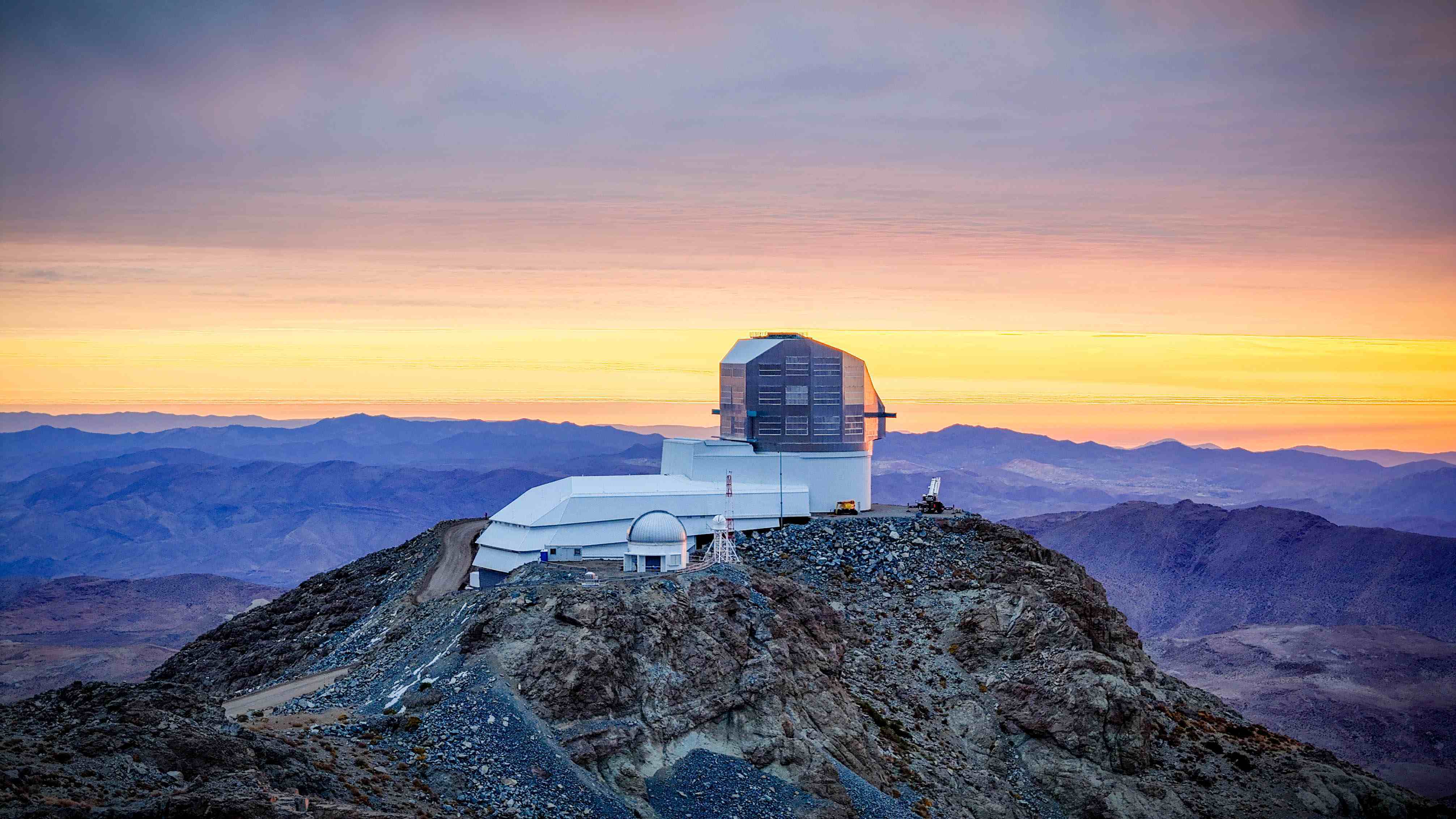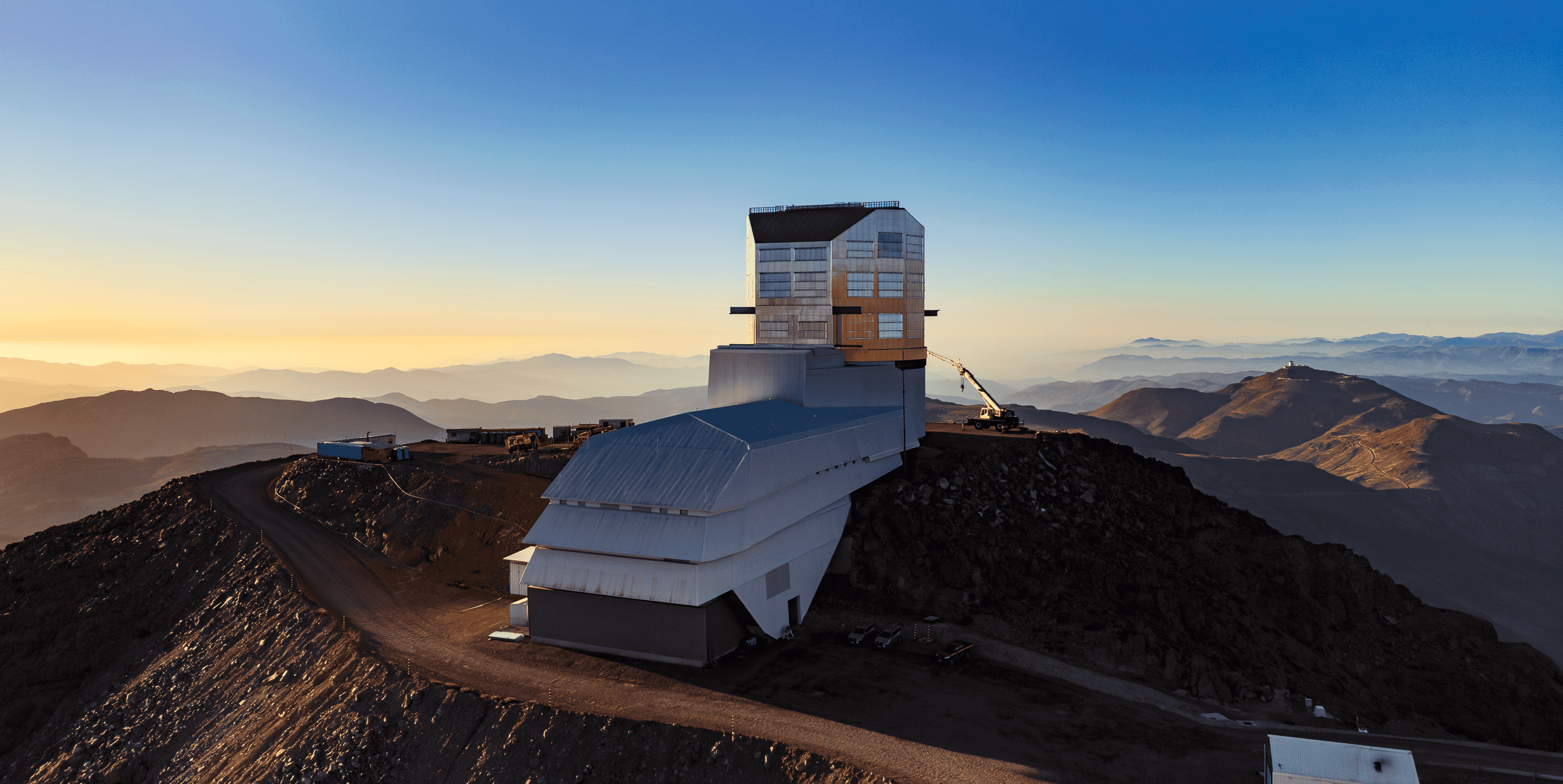High atop the El Peñón peak of Cerro Pachón in northern Chile, the Vera C. Rubin Observatory is about to do a scientific first: survey the entire southern hemisphere night sky for 10 consecutive years. The Legacy Survey of Space and Time, or LSST, is expected to start at the Rubin Observatory in 2025 and will use the world’s largest digital camera to capture a high definition time-lapse of the visible sky.
Jointly funded by the US National Science Foundation and the US Department of Energy, the Rubin Observatory is expected to generate an unprecedented amount of data during the LSST. Ana Ennis, a joint postdoctoral researcher at Perimeter Institute and the University of Waterloo Centre for Astrophysics, is the co-chair for the Star Clusters Working Group within the LSST’s science collaborations. As part of the leadup to the telescope’s grand opening, Ennis is working alongside a team of international astronomers to prepare for the incoming flood of data.
The LSST camera will generate around 20 terabytes of data every 24 hours. That’s the data equivalent of bingeing over three years of Netflix, the Observatory says on its website. To get ahead of the rush, Ennis says the Star Clusters Working Group members are “developing pipelines and figuring out how we’re going to manage an amount of data I don’t think anyone’s seen before. And it’s going to be coming very fast.”
The LSST will be accomplishing two goals at the same time. First, cover as much of the southern hemisphere as quickly as possible to monitor for events like objects moving in space and gamma-ray bursts. Once detected, the LSST will send out an alert so that other telescopes can focus in on these transitory phenomena.
The second goal is taking very deep images of the sky. Deep images require long exposure times to collect all the photons produced by faraway stars and galaxies.
The two goals are somewhat at odds with each other. “You want to cover the whole sky, so you can see if anything has changed,” says Ennis. “But you also want to get deep exposures of the sky so people like me can look at the galaxies and star clusters.”
“In order to do both those things, the survey is going to look at each part of the night sky for a short amount of time, but it’s going to try to cover as much as possible. It’s going to do that every single night for 10 years, so that in the end, the final images that we get will be super deep.”
Ennis herself will be awaiting data from the LSST on globular clusters, dense groups of stars with a common origin. They’re basically fossils, says Ennis, relics of galaxy formation.
One of the big questions about globular clusters is their possible connection to dark matter halos. These theorized masses of dark matter are thought to extend outward from galaxies, and that globular star clusters might map the extent of the halos.
“With normal telescopes right now, you’re very limited in the size of the image you get,” explains Ennis. “LSST is going to let us map what globular clusters are doing throughout the whole sky, and if that connects to dark matter halos, to me I think that will be the big breakthrough.”
While Ennis is used to processing surveys with tens of galaxies, she will soon be processing hundreds of galaxies thanks to the data from the LSST. The anticipated data is pushing astronomers to work in different ways. There is an emphasis on communicating properly, setting common goals, and writing better code. And it’s pushing countries to work together.
“We’re in the era of large surveys and there’s a lot of big telescopes coming up,” says Ennis. There’s the Euclid telescope, already in action from the European Space Agency, the Roman Space Telescope, which NASA is expected to launch in 2027, and CASTOR, a proposed space telescope survey from the Canada Space Agency. Ennis points out that on top of managing the already overwhelming amount of data generated by the LSST, the researchers must prepare to work with one another to make the most out of each telescope’s findings.
“The synergy between all these big surveys is going to end up being a lot bigger than we can even imagine right now,” she adds.
À propos de l’IP
L'Institut Périmètre est le plus grand centre de recherche en physique théorique au monde. Fondé en 1999, cet institut indépendant vise à favoriser les percées dans la compréhension fondamentale de notre univers, des plus infimes particules au cosmos tout entier. Les recherches effectuées à l’Institut Périmètre reposent sur l'idée que la science fondamentale fait progresser le savoir humain et catalyse l'innovation, et que la physique théorique d'aujourd'hui est la technologie de demain. Situé dans la région de Waterloo, cet établissement sans but lucratif met de l'avant un partenariat public-privé unique en son genre avec entre autres les gouvernements de l'Ontario et du Canada. Il facilite la recherche de pointe, forme la prochaine génération de pionniers de la science et communique le pouvoir de la physique grâce à des programmes primés d'éducation et de vulgarisation.



